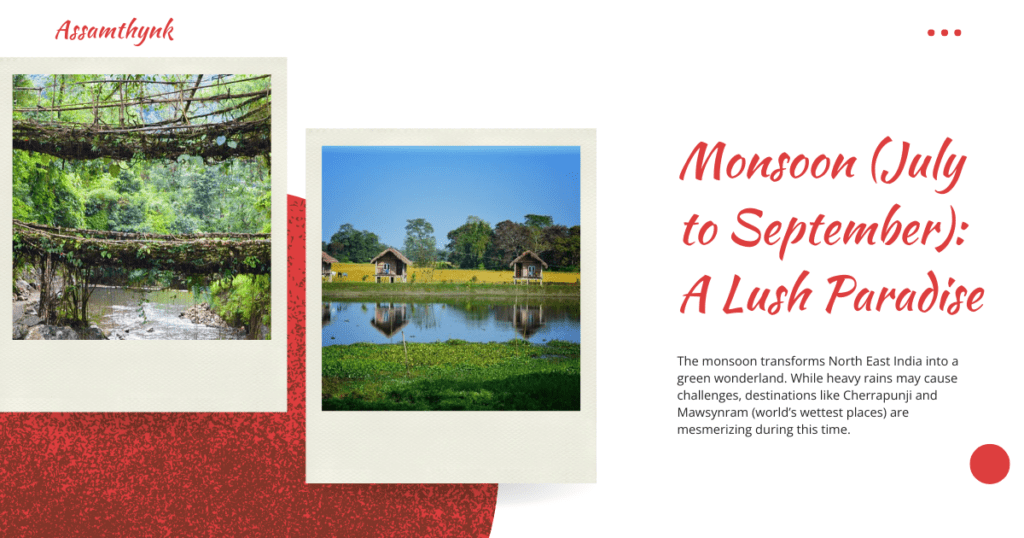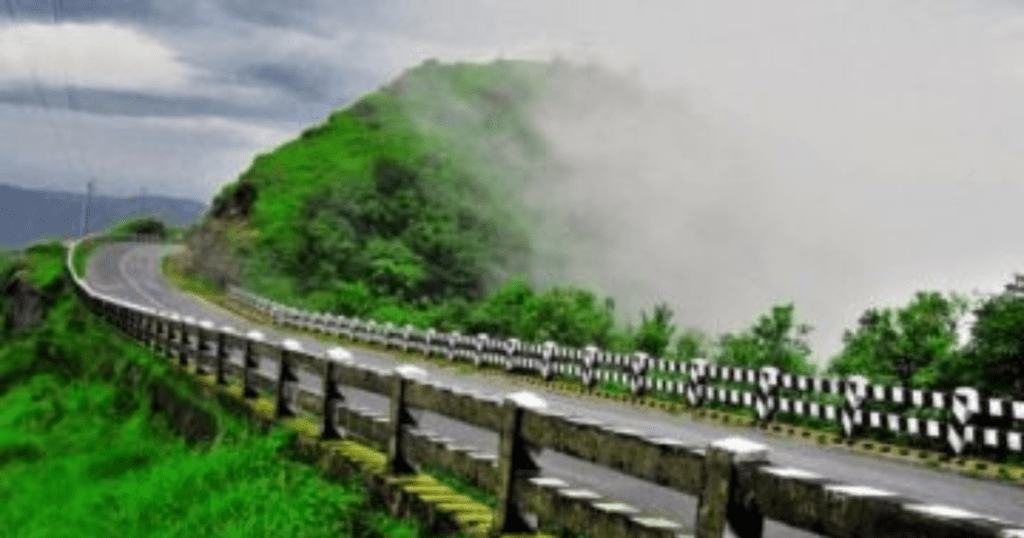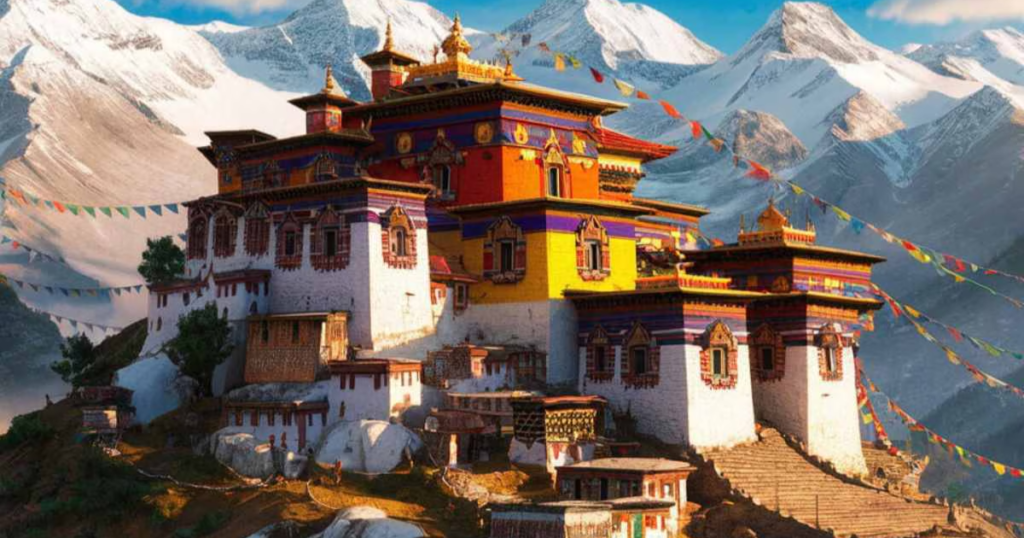Introduction
Places to visit in Northeast India are more than just travel destinations—they’re gateways to a world of breathtaking beauty, unique tribal cultures, and experiences you won’t find anywhere else in the country. Tucked far from the usual tourist trails, this region invites you to step into mist-covered mountains, wander through ancient monasteries, and discover vibrant festivals echoing centuries-old traditions.
Whether you’re dreaming of scaling Himalayan peaks, drifting along a river island at sunrise, or exploring fascinating museums and wildlife sanctuaries, the best places to visit in Northeast India offer something for every kind of traveler. This guide spotlights five truly unforgettable destinations, each chosen for its originality, adventure, and authentic spirit—ensuring your journey is both unique and inspiring.
1. Gorichen Peak
Gorichen Peak stands as the highest mountain in Arunachal Pradesh, soaring to an impressive 6,488 meters (21,286 feet) above sea level. This awe-inspiring Himalayan giant is located in the Tawang district, close to the borders of Tibet and Bhutan. Regarded as sacred by the local Monpa tribe, Gorichen is believed to protect the region from evil spirits, infusing the peak with deep spiritual significance.
The trek to Gorichen Peak is considered one of the most challenging and rewarding in Northeast India. The journey winds through pristine landscapes—towering snow-capped mountains, thick rhododendron forests, and traditional villages untouched by mass tourism. Along the trails, trekkers are rewarded with panoramic views of the higher Himalayas and a rare glimpse into Monpa culture, characterized by prayer flags, Buddhist monasteries, and vibrant festivals.
For adventure seekers, Gorichen offers high-altitude expeditions, camping under starry Himalayan skies, and encounters with unique alpine flora and fauna. The region is accessible mainly between April and June or September and November, when the weather conditions are most favorable. Visiting Gorichen isn’t just about the climb—it’s about experiencing the serenity and mystique of one of India’s most storied and spectacular corners, making it a sought-after goal for trekkers, mountaineers, and cultural explorers alike.
2. Goechala
Goechala, perched at an elevation of about 4,940 meters, is one of India’s most spectacular Himalayan mountain passes and ranks among the top trekking destinations in the country. Situated within Sikkim’s stunning Kanchenjunga National Park, Goechala acts as a dramatic vantage point for witnessing the towering Kanchenjunga—the world’s third-highest peak—along with a ring of snow-draped summits shimmering on the horizon.
The trek to Goechala is celebrated for its wild natural beauty and diversity. Beginning in the quaint village of Yuksom, the trail winds through lush rhododendron forests that bloom in spring, crosses roaring rivers, and traverses alpine meadows filled with grazing yaks. The route features major highlights like the mystical Samiti Lake, renowned for its glassy reflections of surrounding peaks at dawn, and the Dzongri Top viewpoint, which rewards trekkers with 360-degree mountain vistas.
Beyond natural splendor, Goechala offers a test of endurance and spirit—ideal for those seeking adventure, solitude, and connection with the untouched wilds of the Northeast. Trekkers might spot exotic Himalayan birds, including blood pheasants, and, if lucky, the elusive red panda in the pristine forests. The best time for the trek is from April to June and September to November, when the skies are clear and the weather stable.
Choosing Goechala means experiencing the soul of Sikkimese adventure—where every sunrise is surrounded by the grandeur of the world’s highest mountains, and every step is a journey into the heart of the Himalayas.
3. Majuli
Majuli, gracefully floating on the Brahmaputra River in Assam, is celebrated as the world’s largest freshwater river island and a vibrant center of Assamese neo-Vaishnavite culture. Stretching over 880 square kilometers during the dry season, Majuli is an ever-changing landscape sculpted by the river’s currents, creating lush wetlands, sandbars, and verdant rice fields.
At the heart of Majuli’s appeal are its centuries-old Satras—Vaishnavite monasteries established by the saint-scholar Srimanta Sankardev in the 16th century. Each Satra is a living museum of Assamese culture, showcasing classical dance (Sattriya), traditional mask-making, and weaving of Muga silk. Visitors can witness morning prayer rituals, intricate tribal art forms, and handloom weaving on pit looms, offering an authentic glimpse into rural artistic life.
Nature enthusiasts will be captivated by Majuli’s rich avian diversity. During winter, thousands of migratory birds, including the endangered Greater Adjutant stork, flock here, making it a premier birdwatching destination. Bicycle rides along narrow embankments, sunrise boat cruises through tranquil channels, and homestays with local Mishing families add to the immersive experience.
Majuli is best explored between October and March, when the weather is pleasant, and cultural festivals like Raas Mahotsav and Ali Aye Ligang bring the island alive with music, dance, and feasting. Accessible by ferry from Jorhat, this UNESCO-nominated island promises an unforgettable blend of natural beauty and living tradition—ideal for travelers seeking offbeat destinations in Northeast India.
4. Kohima State Museum
The Kohima State Museum, nestled in the heart of Nagaland‘s capital city, stands as the premier repository of Naga tribal culture and heritage. Established in 1972, this remarkable museum houses one of the most comprehensive collections of artifacts from the sixteen distinct Naga tribes, offering visitors an authentic window into the region’s rich anthropological tapestry.
The museum’s galleries showcase an extraordinary array of traditional Naga artifacts, including intricately woven shawls with geometric patterns unique to each tribe, ceremonial spears and shields used in ancient warfare, ornate jewelry crafted from beads, shells, and precious metals, and the iconic feathered headdresses that symbolize tribal status and achievements. The collection also features traditional musical instruments, wooden carvings, and hunting implements that reflect the Nagas’ deep connection with nature.
One of the museum’s most fascinating sections displays artifacts related to the region’s headhunting traditions—a practice that defined Naga warrior culture for centuries. Bronze Mithun horns, ceremonial gates, and ritual objects provide insight into social customs, spiritual beliefs, and the transition from warrior societies to modern communities.
The museum building itself reflects traditional Naga architecture with its sloping roofs and wooden construction, creating an immersive cultural experience. Regular exhibitions highlight contemporary Naga art, textiles, and the evolution of tribal crafts in modern times.
Located near the famous War Cemetery and bustling Kohima markets, the museum serves as an essential starting point for understanding Nagaland’s cultural depth. Open throughout the year, it offers guided tours that bring the exhibits to life through storytelling and historical context, making it indispensable for anyone seeking to understand the soul of Naga civilization.
5. Manipur Zoological Garden:
Located on the outskirts of Imphal, the Manipur Zoological Garden stands as Northeast India’s premier wildlife conservation center and a testament to the region’s extraordinary biodiversity. Established in 1976 and sprawling across 8 hectares of natural habitat, this zoo has earned international recognition for its successful breeding programs and commitment to preserving endangered species native to the Northeast.
The crown jewel of the zoological garden is the Sangai deer (Rucervus eldii eldii), Manipur’s state animal and one of the world’s most endangered deer species. Found exclusively in the floating phumdis (vegetation mats) of Loktak Lake, these graceful creatures are often called “dancing deer” due to their elegant gait. The zoo’s dedicated Sangai enclosure recreates their natural wetland habitat, allowing visitors to observe these magnificent animals up close while supporting crucial conservation efforts.
Beyond the Sangai, the zoo houses over 50 animal species and 55 bird varieties, many endemic to Northeast India. Visitors can encounter the Hoolock gibbon, India’s only ape species, the elusive clouded leopard, colorful hornbills, and the red panda. The Manipuri pony, another endangered native breed with historical significance in polo, also calls this sanctuary home.
The zoo’s naturalistic enclosures prioritize animal welfare, featuring spacious habitats that mimic wild environments. Educational programs, guided tours, and interactive displays make it an ideal destination for families, students, and wildlife enthusiasts. The on-site interpretation center provides valuable insights into regional ecology, conservation challenges, and success stories.
Open year-round with the best viewing opportunities during cooler months (October to March), the Manipur Zoological Garden represents hope for wildlife preservation in Northeast India, making it an essential stop for anyone passionate about nature and conservation.
Best Time to Visit:
The best time to visit Northeast India is from October to April, when the weather is cool, dry, and ideal for travel. During these months, you’ll experience clear skies, vibrant landscapes, and comfortable conditions for outdoor activities like trekking, sightseeing, and wildlife safaris. October and November welcome lush post-monsoon greenery, winter (December to February) is pleasant in the valleys with lively festivals, and March to April brings blooming flowers and renewed energy to the hills. It’s best to avoid the heavy monsoon season (May to September), as intense rainfall can cause travel disruptions and affect your experience. Plan ahead for the most rewarding journey.
Travel Tips
When traveling to Northeast India, obtain necessary permits in advance—Inner Line Permits are required for Arunachal Pradesh and Nagaland. Pack layers of clothing as weather varies dramatically between valleys and mountains. Carry cash, as ATMs are limited in remote areas. Book accommodations early, especially during peak season (October-April). Respect local customs and dress modestly when visiting monasteries and tribal villages. Learn basic local greetings to connect with friendly locals. Pack sturdy trekking shoes for uneven terrain and rain gear for unexpected showers. Try local cuisines but carry basic medicines. Most importantly, travel with an open mind to fully appreciate the region’s rich cultural diversity and natural beauty.
Conclusion
These five destinations—Gorichen Peak, Goechala, Majuli, Kohima Museum, and Manipur Zoological Garden—capture Northeast India’s magic: breathtaking adventure, living tradition, and natural wonder. Skip the usual routes and discover a journey as unique as the land itself. Plan smart, travel responsibly, and let these unforgettable places transform your Northeast India adventure in 2025.
Q2. What is the best time to visit Northeast India?
The ideal time is between October and April, when the weather is pleasant, skies are clear, and festivals like Hornbill and Bihu add cultural charm.
Q3. Is Northeast India safe for tourists?
Yes, Northeast India is generally safe for travellers. Locals are friendly and welcoming. However, always follow local guidelines and check travel advisories for remote areas.
Q4. How many days are enough to explore Northeast India?
A short trip can be 7–10 days, covering 2–3 states. For a more immersive experience, plan at least 15–20 days to explore major attractions across all states.
Q5. Which is the most beautiful state in Northeast India?
Each state has its charm—Sikkim for mountains, Meghalaya for waterfalls, Arunachal Pradesh for monasteries, Assam for wildlife, and Nagaland for tribal culture.
Q6. Do I need a permit to visit all places in Northeast India?
Some states like Arunachal Pradesh, Nagaland, and parts of Sikkim require Inner Line Permits (ILP) for Indian citizens. Foreign tourists may need a Protected Area Permit (PAP).
Q7. What are the must-try foods in Northeast India?
Popular dishes include Assam’s pitha, Meghalaya’s jadoh, Sikkim’s momos, Arunachal’s thukpa, Nagaland’s smoked pork, and Manipur’s eromba.
Q8. How can I travel between the states of Northeast India?
You can travel by air (via Guwahati, Imphal, Agartala, Dibrugarh, and Aizawl airports), trains (limited routes), and road trips via national highways.




Very nice info and right to the point. I don’t know if this is in fact the best place to ask but do you people have any ideea where to employ some professional writers? Thx 🙂